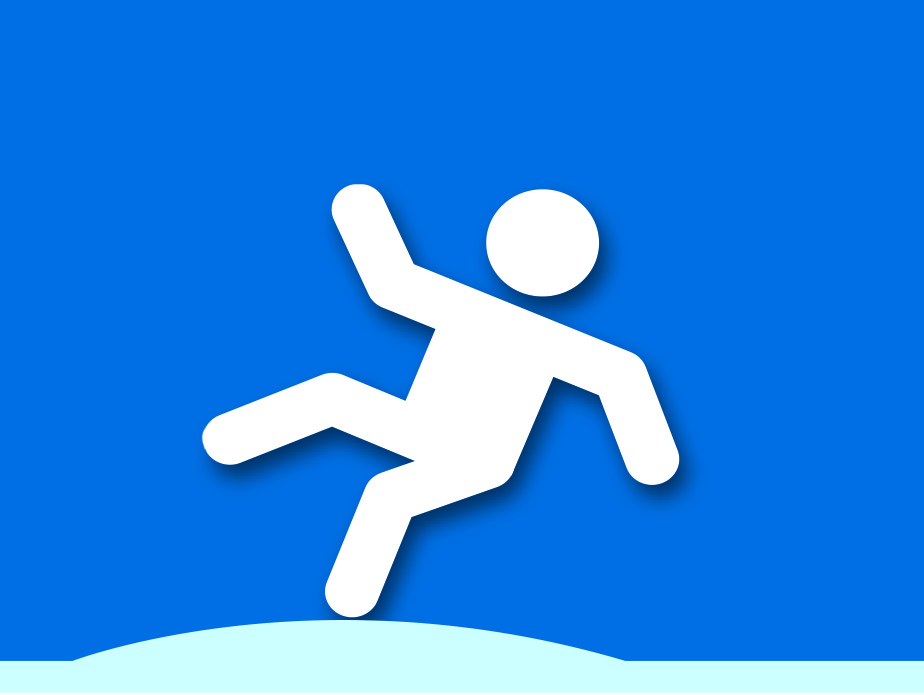
Falls
As we age, the risk of falling increases—with falls accounting for 70% of accidental deaths in persons 75 years and older; and 90% of all hip fractures.. Often, once a person falls, they tend to fall again within six months. So why is falling such a problem? For starters, our bodies have just changed too much. Regular exercise and a healthy diet are two of the most important preventative actions we can take, but as we age, these principles may become more difficult. Unfortunately, this can lead to poor muscle tone, loss of bone mass, and decreased flexibility and muscle strength. Thus, falling becomes even easier. Although it’s impossible to pinpoint one case for falling, we can identify specific risk factors such as, lack of physical activity, osteoporosis, poor vision, hazards in the home and medications, which increase the likelihood of falling. We will take a quick look at these, as well as some things you can do to help decrease your chances of falling!
Age, injury, and not enough time are all easy reasons to skip out on exercise. Try light exercise on a daily or every other day basis. Activities may include walking, swimming, yoga, and even Pilates. Perform daily chores with caution; ie, bend at the knees when lifting an object, wear supportive shoes with rubber soles. Osteoporosis, which is a medical condition in which bones become brittle and fragile from loss of tissue, often as a result of hormonal changes, calcium and Vitamin D deficiencies, lack of physical activity, can also lead to an increased risk for falls. Be sure to eat/drink sufficient calcium; i.e., milk, yogurt, cheese, fish, broccoli, soybeans, tofu, almonds, etc., take a vitamin D supplement; and perform regular exercise.
Poor vision can also lead to falls. Problems such as cataracts and glaucoma increase with age and can affect a person’s depth perception, glare reaction and total vision. Be sure to schedule regular checkups with an ophthalmologist to stay on top of any issues that may arise. Keep eye glasses and contact lenses clean. To make stairs and changes in the levels of your home more visible, apply a color strip to first and last steps of a staircase or changes in flooring heights. You can also do this on handrails to make them stand out!
Medications that we take for conditions like high blood pressure, diabetes, anxiety, depression can affect balance and mental awareness which can increase the risk of falling. Be aware of all common side effects of all medications you take. Throw away all expired medications. Limit alcohol and speak with your doctor/pharmacist about your medications and if any of them will increase your likelihood of falling.
Aside from the reasons a person falls, there are a few, simple things, you can do in and around your home to decrease your chances of falling:
- Tidy up and remove that clutter!
- Make sure a phone is on each level of the home with emergency numbers listed
- Install grab bars around the tub and toilet
- Use nonskid mats inside and outside of the tub
- Install a hand-held shower head or think about using a seat
- Use step stools for things out of reach
- Stay away from floor polishes or waxes
- Check for cracks and uneven edges of sidewalks/driveways and schedule repairs
- Install handrails on inside and outside stairs/steps
- Keep walkways well-lit
- In the winter, be sure to keep walkways shoveled and salted.
In addition to all of this, there are clinical resources available to treat people who are experiencing recurrent falls, such as Kindred at Home’s Safe Strides program. Safe Strides is a unique, home-based fall prevention program. In conjunction with your doctor, clinicians such as licensed Physical and Occupational therapists, as well as Registered Nurses, drive collaborative care, improving patients’ functional outcomes and independence. 97% of patients who participate in this have demonstrated improved balance and mobility. (2011 Kindred at Home National Safe Strides outcomes)
Hopefully these tips will help you decrease your likelihood of falling in the home. Be sure to talk to your physician and/or physical therapist about other ways to prevent falls.



